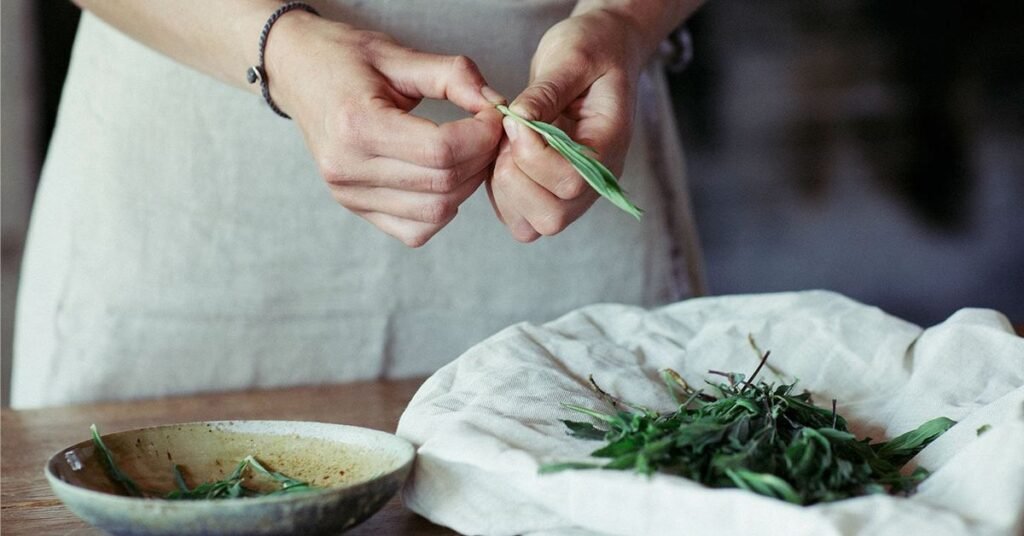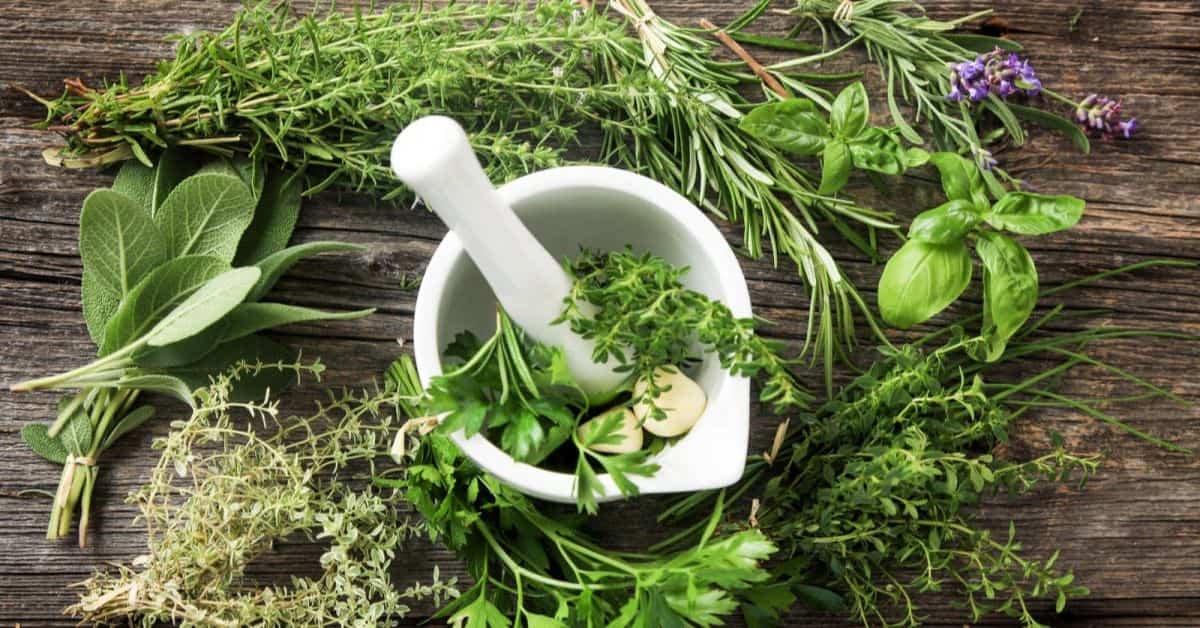Tarragon, scientifically known as Artemisia dracunculus, is a versatile herb cherished for its distinct flavour and myriad health benefits.
Native to the temperate regions of Eurasia, tarragon has been a cornerstone of culinary traditions and traditional medicine for centuries.
Its subtly sweet, liquorice-like aroma and taste make it a favourite ingredient in French cuisine and a valuable herb in natural remedies.
Whether used fresh, dried or as an essential oil, tarragon offers a wealth of applications and benefits that make it an indispensable addition to any kitchen or herb garden.
A Brief History of Tarragon
The history of tarragon is as rich as its flavour. The herb has been cultivated and used for centuries in Europe and Asia. Ancient Greeks and Romans recognized its medicinal properties and used it to treat ailments ranging from indigestion to toothaches. Its name, derived from the Latin dracunculus (meaning “little dragon”), likely refers to the plant’s serpentine root structure or its traditional use in treating venomous bites.
Tarragon gained prominence in medieval European kitchens and apothecaries, where it was used as a culinary spice and a remedy for various ailments. Over time, it became an integral part of French cuisine, earning its place as one of the four herbs in the classic “fines herbes” blend. Today, tarragon is appreciated worldwide for its versatility and health benefits.
Varieties of Tarragon
There are three main types of tarragon, each with unique characteristics and uses:
French Tarragon (Artemisia dracunculus sativa):
- Renowned for its superior flavour, French tarragon is the preferred choice for culinary applications. Its tender leaves exude a delicate, anise-like aroma that enhances various dishes. However, French tarragon is sterile and cannot produce seeds, so it must be propagated through cuttings or division.
Russian Tarragon (Artemisia dracunculus):
- Russian tarragon is hardier and more straightforward to grow than its French counterpart but has a milder, less refined flavour. It is often used in herbal teas or as a garnish rather than as a dish’s primary flavouring agent.
Mexican Tarragon (Tagetes lucida):
Not a true tarragon but often used as a substitute, Mexican tarragon offers a sweeter taste and is prized in regions where French tarragon is challenging to cultivate. It also has bright yellow flowers, making it a decorative addition to gardens.
Culinary Uses of Tarragon

Tarragon’s culinary applications are vast, making it a staple in kitchens worldwide. Its distinctive flavour enhances a variety of dishes without overpowering them. Here are some popular culinary uses:
Sauces and Dressings:
Tarragon is a key ingredient in classic French sauces like Béarnaise and Hollandaise. When steeped in vinegar or mixed into vinaigrettes, it infuses salad dressings with its subtle, tangy flavour.
Marinades and Oils:
Tarragon pairs beautifully with olive oil, creating flavorful herb oils that elevate roasted vegetables, grilled meats, and seafood. It also serves as a delicious addition to marinades, particularly for chicken and fish.
Egg and Cheese Dishes:
Tarragon’s delicate flavour complements egg-based dishes such as omelettes, quiches, and soufflés. It also pairs well with creamy cheeses in dips or spreads.
Soups and Stews:
Adding a few tarragon sprigs to soups and stews imparts a warm, aromatic depth. It works particularly well in chicken soup or creamy bisques.
Because of its potent flavour, tarragon is best used sparingly to avoid overwhelming the dish.
Health Benefits of Tarragon
Tarragon is not just a culinary delight but also a potent medicinal herb. Packed with essential nutrients and bioactive compounds, it has been used in traditional medicine for centuries. Here are some of its notable health benefits:
Digestive Aid:
Tarragon is known for stimulating appetite and improving digestion. Its essential oils help reduce bloating and promote the efficient breakdown of food.
Anti-Inflammatory Properties:
The herb contains compounds such as eugenol and luteolin, which have anti-inflammatory effects. Tarragon can help alleviate arthritis symptoms, muscle pain, and other inflammatory conditions.
Sleep Support:
Traditionally used as a natural remedy for insomnia, tarragon’s calming properties may help improve sleep quality. Drinking tarragon tea before bedtime is a widespread practice in some cultures.
Blood Sugar Regulation:
Emerging studies suggest that tarragon may help regulate blood sugar levels by improving insulin sensitivity. This makes it a potential ally for individuals managing diabetes or metabolic disorders.
Rich in Nutrients:
Tarragon is a good source of vitamins and minerals, including vitamins A, C, potassium, and manganese.
Growing Tarragon
Tarragon is a relatively low-maintenance herb that thrives in well-drained soil and sunny locations. Here are some tips for growing and caring for tarragon:
- French Tarragon: Since it cannot grow from seeds, propagate French tarragon through cuttings or root division. Plant it in well-drained soil with full sunlight and moderate watering.
- Russian Tarragon: This variety is more straightforward to grow from seeds and is more tolerant of colder climates. However, similar soil and sunlight conditions are required.
Tarragon can be grown in garden beds or pots, making it accessible to gardeners with limited space. Regular pruning encourages healthy growth and prevents the plant from becoming woody.
Storing Tarragon
To preserve the herb’s flavour and aroma, proper storage is essential:
- Fresh Tarragon: Wrap the sprigs in a damp paper towel and store them in the refrigerator for up to a week.
- Frozen Tarragon: Freeze fresh tarragon by placing the leaves in an airtight container or freezing them in ice cube trays with water or olive oil.
Incorporating Tarragon into Your Life
Whether you’re a seasoned chef, an herbal enthusiast, or someone looking to add a touch of elegance to your meals, tarragon is a versatile and rewarding herb. From enhancing culinary creations to offering natural health remedies, tarragon is a plant that does it all.
For those new to the herb, start by experimenting with simple recipes like tarragon-infused vinegar or a classic French Béarnaise sauce. As you grow more comfortable, explore its applications in teas, marinades, and herbal blends.
Conclusion
Tarragon’s unique culinary versatility and medicinal value make it a herb worth celebrating.
Its delicate flavour enhances a wide array of dishes, while its health benefits offer natural solutions for common ailments.
Easy to grow and store, tarragon is a practical addition to any kitchen or garden. Whether you’re savouring its taste in a gourmet meal or enjoying its soothing properties in a cup of tea, tarragon enriches life in countless ways.
Embrace this remarkable herb and discover how it can enhance your culinary and wellness journey.
Latest Post!






